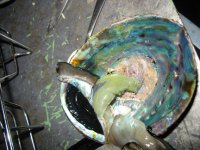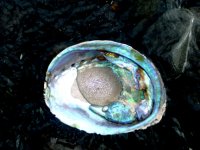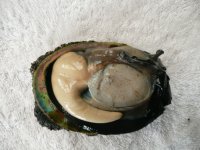GemGeek
Pearlista
Yes. Mainly because being so highly nacreous in nature, all of the necessary components are present in the blood, pallial fluid and digestive juices. Protein, calcium and most importantly... bicarbonate. HCO3 is vital in the pH regulatory system. It's very important because digestion requires high acidity, whereas other tissues within the same anatomy (especially nerves or even an empty stomach, for that matter) could become damaged. There is a fine line outside the acceptable range of pH, where proteins are denatured and digested or enzymes lose their ability to function.
To me, this seems more plausible than the introduction of foreign epithelial cells.
So, the cells "repurpose"? Would that be a reaction to damage, or a reaction to environmental changes? (Like when frogs change sex?)






